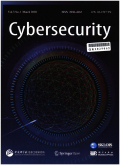- 钛学术文献服务平台 \
- 学术期刊 \
- 工业技术期刊 \
- 自动化技术与计算机技术期刊 \
- 网络空间安全科学与技术(英文版)期刊 \
null
Security-first architecture: deploying physically isolated active security processors for safeguarding the future of computing
基本信息来源于合作网站,原文需代理用户跳转至来源网站获取
摘要:
It is fundamentally challenging to build a secure system atop the current computer architecture.The complexity in software,hardware and ASIC manufacture has reached beyond the capability of existing verification methodologies.Without whole-system verification,current systems have no proven security.It is observed that current systems are exposed to a variety of attacks due to the existence of a large number of exploitable security vulnerabilities.Some vulnerabilities are difficult to remove without significant performance impact because performance and security can be conflicting with each other.Even worse,attacks are constantly evolving,and sophisticated attacks are now capable of systematically exploiting multiple vulnerabilities while remain hidden from detection.Eagering to achieve security hardening of current computer architecture,existing defenses are mostly ad hoc and passive in nature.They are normally developed in responding to specific attacks spontaneously after specific vulnerabilities were discovered.As a result,they are not yet systematic in protecting systems from existing attacks and likely defenseless in front of zero-day attacks.To confront the aforementioned challenges,this paper proposes Security-firstArchitecture,a concept which enforces systematic and active defenses using Active Security Processors.In systems built based on this concept,traditional processors (i.e.,Computation Processors) are monitored and protected by Active Security Processors.The two types of processors execute on their own physically-isolated resources,including memory,disks,network and I/O devices.The Active Security Processors are provided with dedicated channels to access all the resources of the Computation Processors but not vice versa.This allows the Active Security Processors to actively detect and tackle malicious activities in the Computation Processors with minimum performance degradation while protecting themselves from the attacks launched from the Computation Processors thanks to the resource isolation.

推荐文章
期刊_丙丁烷TDLAS测量系统的吸收峰自动检测
带间级联激光器
调谐半导体激光吸收光谱
雾剂检漏 中红外吸收峰 洛伦兹光谱线型
不同盐度、温度及光照对漂浮浒苔生理生态的影响
浒苔
盐度
温度
光照
生理生态
期刊_联合空间信息的改进低秩稀疏矩阵分解的高光谱异常目标检测
高光谱图像
异常目标检测 低秩稀疏矩阵分解 稀疏矩阵 残差矩阵
内容分析
关键词云
关键词热度
相关文献总数
(/次)
(/年)
文献信息
| 篇名 | Security-first architecture: deploying physically isolated active security processors for safeguarding the future of computing | ||
| 来源期刊 | 网络空间安全科学与技术(英文版) | 学科 | |
| 关键词 | |||
| 年,卷(期) | 2018,(1) | 所属期刊栏目 | |
| 研究方向 | 页码范围 | 1-11 | |
| 页数 | 11页 | 分类号 | |
| 字数 | 语种 | 中文 | |
| DOI | |||
五维指标
引文网络
引文网络
二级参考文献 (0)
共引文献 (0)
参考文献 (3)
节点文献
引证文献 (0)
同被引文献 (0)
二级引证文献 (0)
2011(1)
- 参考文献(1)
- 二级参考文献(0)
2014(1)
- 参考文献(1)
- 二级参考文献(0)
2017(1)
- 参考文献(1)
- 二级参考文献(0)
2018(0)
- 参考文献(0)
- 二级参考文献(0)
- 引证文献(0)
- 二级引证文献(0)
引文网络交叉学科
相关学者/机构
期刊影响力
网络空间安全科学与技术(英文版)
主办单位:
中国科学院信息工程研究所
出版周期:
季刊
ISSN:
2096-4862
CN:
10-1537/T
开本:
出版地:
邮发代号:
创刊时间:
语种:
eng
出版文献量(篇)
54
总下载数(次)
0
总被引数(次)
0
期刊文献
相关文献
推荐文献
- 期刊分类
- 期刊(年)
- 期刊(期)
- 期刊推荐

 免费查重
免费查重










